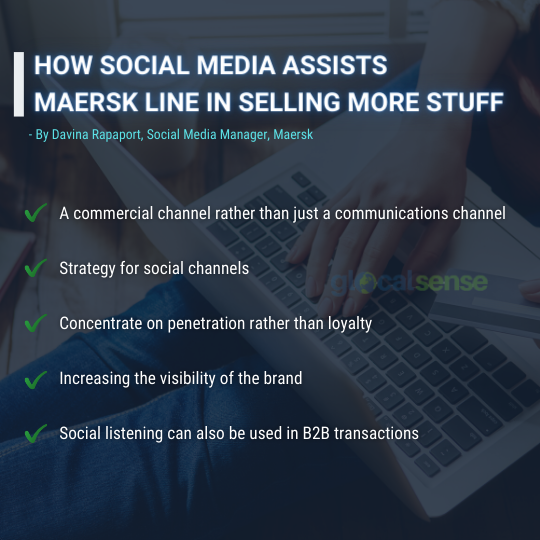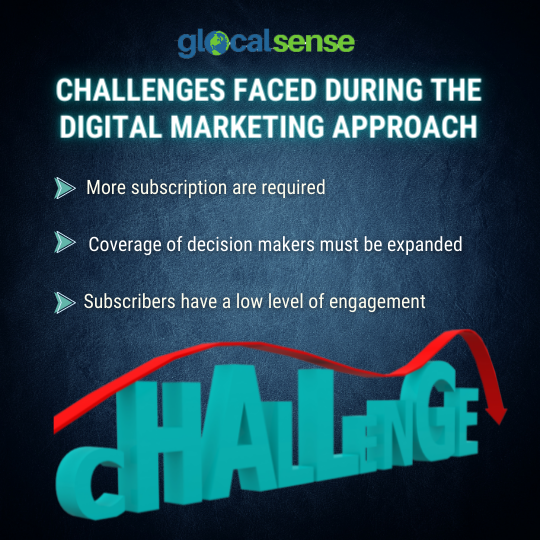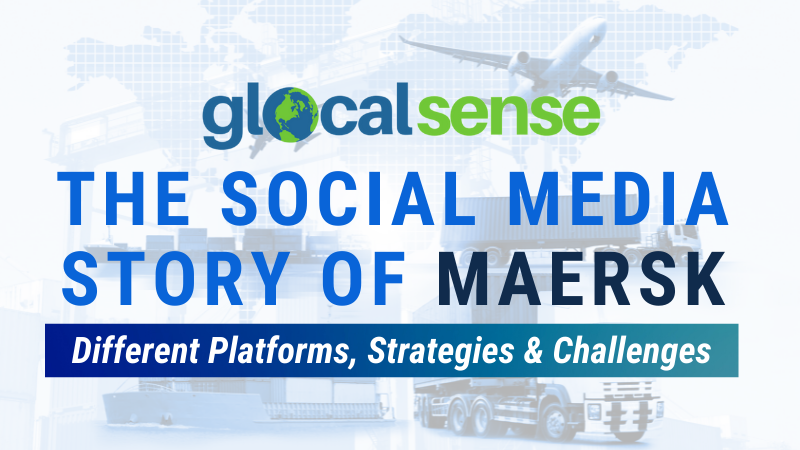Maersk Line
Maersk Line, often known as Maersk Sealand, is a Danish worldwide container shipping firm and the Maersk Group’s largest operating affiliate. It is the world’s largest container shipping firm by fleet size and cargo capacity. It has regular services to 374 ports in 116 countries. Maersk Line has a fleet of 708 ships with a combined total of 4.1 million TEU.
Maersk’s Services
Maersk Line provides broad coverage between South America and Europe and Africa, in addition to its primary trade lanes of Asia-Europe and Trans-Atlantic trades. In 2011, the corporation also introduced the revolutionary Daily Maersk concept, which provided a premium guaranteed service between Chinese supply ports and European base ports. However, despite trade support, Maersk Line was obliged to reduce benefits due to an oversupply.
Container Ships
Container ships did not disrupt Maersk Logistics’ operations. Instead, formation of new agencies and branches in nations formerly served by external agents, enabled it to supervise its operations better. The first Triple-E container ship was built in 2013. It was the world’s longest ship at the time, measuring roughly 400 meters in length and carrying over 18,000 20-foot containers.
Container Shipping
Container shipping is Maersk’s most profitable business, accounting for half of its total revenue. Currently, the firm engages in logistics and forwarding activities. Maersk Line is the company’s largest division in terms of revenue and people. It has around 550 vessels with a 2.2 million TEU capacity.
Maersk’s assumptions
Indigenous values have governed Maersk from its inception. As a result, the business has earned the confidence of its customers.

Values such as,
- Constant concern – The company considers the future, makes plans and puts them into action. It collects environmental data, seeks out new ideas, and proposes fascinating innovations.
- Humility – Listening, learning, sharing, and making room for others are all examples of humility. The firm expresses trust and delegated authority. It never overlooks rivals.
- Righteousness – The world is a kinship that needs to be nurtured—openness to both the good and the terrible. One of the company’s fundamental assumptions is that people would speak up in arguments and support choices.
- Employees – Motivating and mobilizing the appropriate individuals and assembling the best team possible. Continual improvement is a must.
- Name – With a desire to achieve greater heights. It embodies values and instils enthusiasm for the company’s mission to maintain the company’s targeted image in the eyes of consumers and the general public.
Changing the way of trade in the future
Maersk Growth encourages people to think about and act on global issues. That’s why they support businesses that use innovative business models and technologies to revolutionize commerce. It focuses to accelerate the adoption of intelligent logistics technologies, address supply chain inefficiencies, and build a more sustainable transportation industry by investing in them.
And if they believe in your idea, they’ll work hard to make it a reality. They’ll deploy the entire force of their operational knowledge and world-class infrastructure to give you every chance to become a key participant in the ecosystem, in addition to funding.
Maersk Line B2B values in social media
A substantial part of business activity is marked by an unparalleled focus on customer interest cultivation in the twentieth century. In addition, the commercialization of hospitality created a demand and desire for the type of connectivity and communication that now pervades personal and corporate interactions.
Business-to-business companies can profit from improving their relationships with customers and other stakeholders. For B2C businesses, social media has already proven to be an effective tool. Despite their distance from clients, B2B enterprises have now joined social media sites.
In less than a year and a half, shipping behemoth Maersk Line has amassed an impressive 780,000 Facebook likes and an extensive presence across 11 other platforms. In addition, there are 40,000 Twitter followers, 30,000 LinkedIn followers, and 22,000 Instagram followers.
The campaign has changed the look of Maersk Line – at a meager cost – in a conservative B2B industry “where you’d imagine no one would be social.”
How social media assists Maersk line in selling more stuff – By Davina Rapaport, Social Media Manager, Maersk.
One of the highlights of Marketing Week Live was how social media could help businesses sell products. Davina Rapaport, Social Media Manager of shipping giant Maersk Line, delivered a keynote address where the following was discussed,

- A commercial channel rather than just a communications channel:
It’s wonderful to hear someone start their social media conversation with the commercial demands of the business. However, Davina emphasized that social media should be more than just a communication channel; it should also be a commercial tool that helps SMS (sell more products) or SMC (sell more containers). The most important metric for tracking social media is lead creation, not likes or “interaction.” Davina said it is critical to “speak the same language as the board” to gain trust and win marketing funding.
2. Strategy for Social Channels:
Davina’s first move after joining Maersk was to conduct quantitative research to determine the functions that various social media channels could play in the marketing mix (see her sharing of the results below). Her action demonstrated that LinkedIn was the most suitable medium for the brand, mainly when sharing and soliciting opinions on the shipping business. On the other hand, Twitter was better suited to customer service updates and sharing news titbits with journalists. And Facebook is an excellent way for employees to stay up to date on corporate news. Davina and her
team have therefore developed what she refers to as a “digital ecology.”
3. Concentrate on penetration rather than loyalty:
Finally, someone says that social media isn’t about building loyalty but rather about increasing penetration. In this context, the essential job for social media is what Maersk refers to as “attract,” or creating leads for new business.
4. Increasing the visibility of the brand:
Purchasing space on a commercial shipping line, like most B2B categories, is a complex purchasing process, with an average of 5.4 people engaged in each purchasing decision. When used correctly, social media can play a role in raising Maersk’s profile so that it is more likely to be considered in shipping purchasing conversations.
5. Social listening can also be used in B2B transactions:
In 2015, Maersk began experimenting with social listening. Social listening is used to examine how people reacted to the expansion of two maritime routes and the closure of a third. The social media conversation centered on the bad aspects of the route closure, with little or no mention of the positive news of additional routes. It resulted in a recommendation that positive and bad news be separated in the future to guarantee that the good news received its fair share of exposure.
To summarise, Davina has demonstrated a refreshingly realistic and business-led approach to incorporating social media into the mix. As with the rest of marketing, the emphasis should be on an assisting SMS.
5 Key Maersk’s Social media Platforms
Facebook, Twitter, Google+, Instagram, and LinkedIn are the five social media channels used by Maersk. They also have accounts on Flickr, Youtube, Sina Weibo, and Vimeo. Maersk began a social media listening phase in 2011 and has put its approach into action since then. So now it’s time to check out some of their platforms:

- Facebook: Draws attention by sharing both positive and negative newsworthy stories, as well as users’ photographs and tales, reflecting Maersk’s efforts to be both dynamic and credible. Being a global firm, Maersk has also built up a system for global employees to publish local news on Maersk’s global Facebook page. Their posts are only visible to those in their region.
- Twitter: With a panel of employees, shares more severe news with the shipping press and other industry people to bring knowledge and diversity into play and develop a transparent social corporate culture.
- Instagram: Started the #maersk spotting craze, in which people all around the world use their phones to take images of Maersk ships and containers and upload them on Instagram, which subsequently is shared on Facebook, Twitter, and other social media platforms.
- LinkedIn: Experts worldwide will be invited to a LinkedIn group to discuss industry difficulties, opportunities, and other topics. It’s a terrific opportunity for Maersk to learn from specialists whom they wouldn’t have met otherwise.
- Google+: It’s also an excellent platform that once provided opportunity for Maersk to learn from specialists they might not have met otherwise. When the company launched new projects, it used Google+ Hangouts to organize smaller press briefings. A few journalists can video chat with executives.
By effectively utilizing multiple social media channels, Maersk Line sets new norms for B2B client involvement. Resistant businesses will eventually go out of business. Maersk’s advice to other B2Bs is to be bold and take risks. Nobody wants to deal with a company that doesn’t have a face.
How Maersk Line Uses social media to Increase Transparency and Customer Engagement
Maersk Line employs a variety of social channels for a variety of objectives. Maersk Line, unlike other corporations, posts customized information to distinct audiences across many media. Maersk Line did this by segmenting their audience as follows:
- Experts (LinkedIn, Google+)
- Customers (Chatter, LinkedIn, Facebook, Twitter)
- Followers (Tumblr, YouTube, Instagram, Pinterest, Facebook)
- Employees (Maersk Line Social, Flickr, Vimeo, Chatter)

Maersk Line uses Facebook to engage with its customers. They share photographs and videos of their containers being sent worldwide to Facebook daily. Each everyday post receives between 500 and 3500 likes.
LinkedIn is used to connect with shipping industry experts. As a result, customers may get thorough information on shipping and logistics and stay up to speed on the latest news and events.
Customers of Maersk Line have early access to reports, news, press releases, and event information via Twitter. They also perform live tweets with industry professionals to discuss the newest developments.
Maersk Line has an Instagram account where you can browse images contributed by staff and followers. Many employees are mariners, and they post many amazing photographs of the ocean and the seas. When founder Maersk McKinney Moller died, there was a yearning to learn more about the company’s origins. Users from all over the world could view the images in the archives, as shown below. The folklore and myth captivated users, who expressed a strong interest in them.
Maersk Line has transitioned from a communicationally closed business to welcoming stakeholders as proactive co-producers of information by utilizing these various platforms.
Maersk Line has become their publisher thanks to social media, rather than relying on other media. It has enabled them to respond to crises by providing them with access to tweeters on the ground in Egypt, where the ship Emma Maersk ran aground. Because of their local access, they gathered and uploaded images, made a statement, and gained control of the situation before other media picked up the story.
Most businesses utilize social media only for marketing and recruitment. However, Maersk Line strategically employs social media in their external (and occasionally internal) communication, establishing relationships and cooperation with stakeholders. The value of their social media activities has been that they have become wiser about the company faster and cost efficient than ever before.
Challenges faced during the digital marketing approach
Maersk draws on a great tradition of pioneering achievement and expansion and has long held a coveted position in the maritime sector. However, to service its value statement, any organization must stay up with changing Global regulatory frameworks (GDPR), marketing trends, and technology. This paradigm shift had a significant impact on Maersk’s subscription rates and digital marketing approaches.

- More subscriptions are required:
GDPR has an impact on every corporate firm. Organizations must all devise new methods of marketing that do not violate privacy laws. Marketers are facing difficult circumstances. For example, Maersk saw an increase in unsubscriptions from their promotional programs.
2. Coverage of Decision Makers must be expanded:
Maersk values its relationships with customer decision-makers and influencers. Therefore, Maersk prioritizes client coverage and relationship building as one of its key priorities.
3. Subscribers have a low level of engagement:
Maersk has a high number of subscribers. It is never easy to engage such a vast subscriber base. Over the years, Maersk has done an excellent job of engaging its audience. Engagement measures like email open and click rate have outperformed industry averages. Maersk Marketing understands the industry shifts. The team wishes to engage subscribers proactively, ensure that marketing dollars return on investment, and develop a sales funnel with a high conversion ratio.
Maersk objective and success story on social media
The objectives:
The approach’s main goal was to “become closer to our customers,” with brand awareness, brand loyalty, employer branding, employee retention, customer insights, and even co-creation listed as good outcomes. According to the strategy, platform diversification is the way to go: the organization recommended employing multiple platforms for different reasons.
The success story:
Since then, it’s been a long journey of success that has shocked many people. Some of the highlights for your reference:
- On Facebook, there are 780,000 fans with a record-high level of engagement.
- Has a twitter panel of select workers and a strategic presence on Twitter.
- A stylish and elegant Instagram presence that has sparked a global #maersk spotting craze and earned Maersk Line a placement on Instagram’s elite list of “Suggested Users.”
- More than 150 national communication managers worldwide may now publish local updates to the company’s global Facebook page. Assuring simplicity, brand consistency, and practical/relevant consumer communication – and ensuring that Maersk Line truly “gets closer to its customers.”
Better than the large B2C brands on social:
Maersk Line came in second with a score of 37.0 in a mini-survey conducted in July 2012 to measure how good Maersk Line is at social media compared to the top 12 brands on Facebook.
In comparison, Lego scored 48.0, Disney 34.2, Shell 19.1, Red Bull 6.0, and Coca-Cola 2.2.
The “Maersk Line on social media” story has already gained much press, with it being hailed as a new benchmark for B2B enterprises on social media.Jay Baer and Scott Stratten, two of the top five social media specialists, have shown their enthusiasm on multiple occasions. Currently, case studies about Maersk Line are being written for the M.I.T. and Harvard University curriculum.
Done for almost no cost:
The most amazing aspect of the campaign is its relatively low cost. Aside from occupying less than one FTE, it has only generated roughly $ 100K. In additional external expenses, it is allowing Maersk Line to avoid looking into things like ROI.
Conclusion:
It is concluded with a concrete proposal to Maersk Line’s top management to broaden the scope of social media. Maersk Line would encompass both Customer Service and Sales to improve the communications department’s setup.
The recommendation got adopted by management, and Maersk Line will focus on deploying social media across the organization in 2013 – and turning social interaction into a direct bottom-line benefit.
